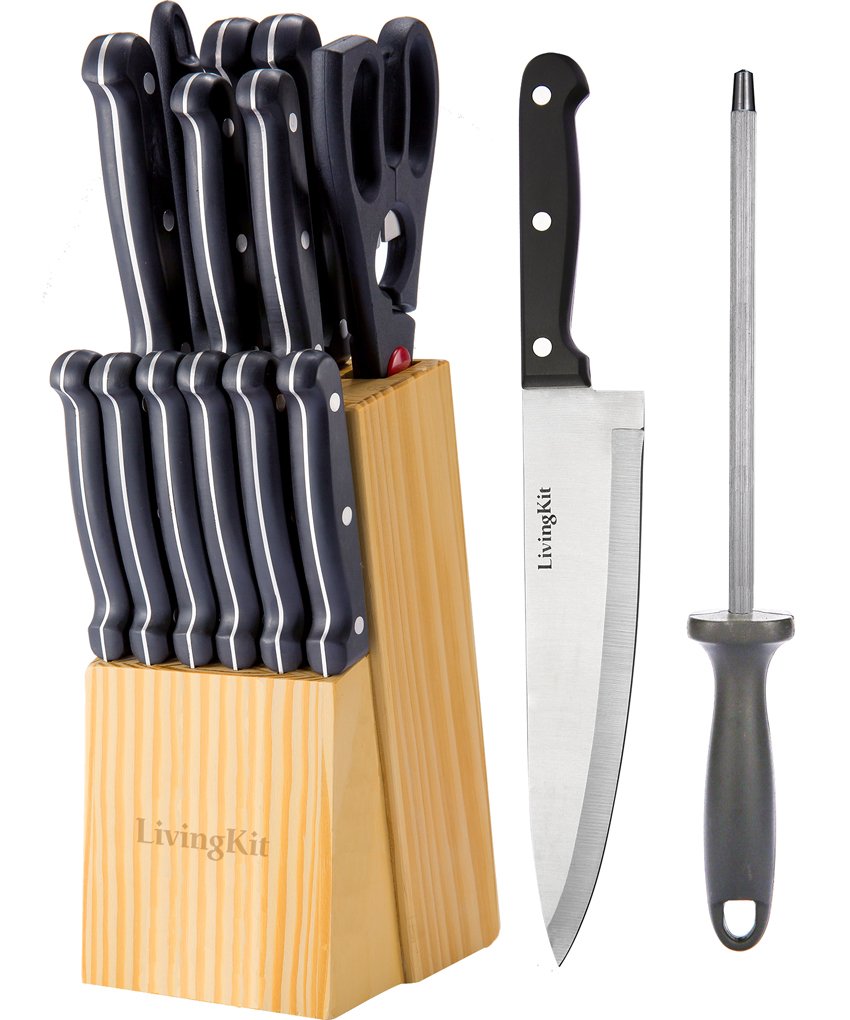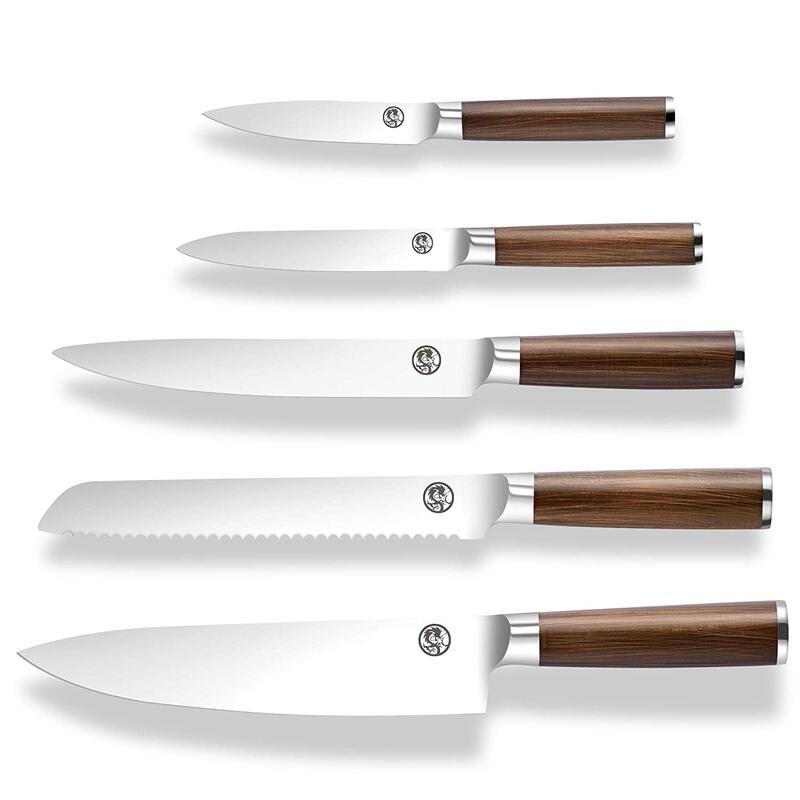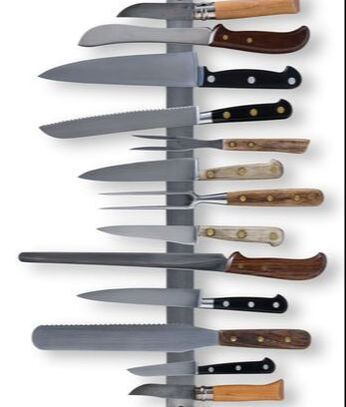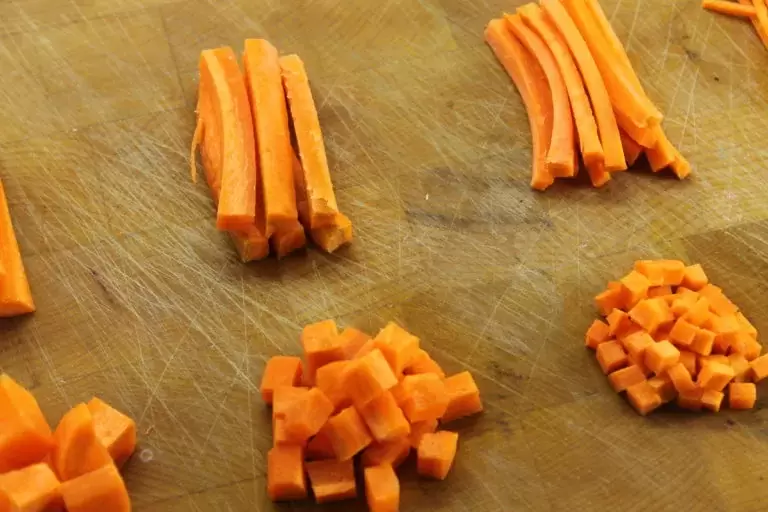|
Have you ever been dazzled by tv chefs who wield knives like magicians? Or, maybe you just want to speed up your own food prep, and, keep all your fingers in the process. The good news is that you only need a few basic skills to slice and dice like a pro. First, there are 3 standard rules you should know about kitchen cutting: Number One:
Sharp is safe. A sharp knife is safer than a dull one. Sharp knives cut easily into food, while dull ones can slide off the surface and can cut you instead. Two: Use a wooden, plastic, or composite cutting board. Other surfaces like metal, glass, or stone, dull knife blades. Three: Clean your knives by hand. Don’t put quality knives in a dishwasher. Just wipe the blade clean, and dry as soon as you finish cutting food. This helps keep the blades sharp. So what kind of cutting tools will you need? Start with 3 basic knives. A chef’s knife: For chopping and dicing; A paring knife for small tasks like peeling, seeding, and trimming fat from meat; and a serrated knife for slicing bread and tomatoes. You can cut up just about anything with these 3 knives. And, you don’t have to spend big bucks on a huge set. Next, How to hold knives. so you can cut efficiently, and, with confidence. With your thumb and forefinger, grasp the blade of the knife where it meets the handle. The best electric knife sharpener is also a necessary tool for kitchen. Think of pinching it in your fingers in an “okay” sign. Rest the handle of the knife in your last 3 fingers. Never put your index finger along the top of the blade. Use your other hand to guide the food towards the knife. To keep your guide hand safe, curl you fingers inward, like a claw,with your thumb behind your fingertips. You can actually brush the flat of the knife against the knuckles as a guide. Walk your fingers back slightly after each cut. Just remember to keep your fingers curled inward, and there’s little danger of cutting yourself. Now let’s get cutting. https://www.youtube.com/watch?v=Ydc_SaQ_eRQ First, Let’s chop. Chopping food is the most basic and versatile knife skill. Chop when your food doesn’t have to be cut into exact, even pieces, or when you’re making a recipe that will cook for a long time, like soup stock, braise or stew. Start by resting the tip of the chef’s knife on the cutting board, while you move the heal of the blade up-and-down. For onions, first cut off the top end, next, cut the onion in half lengthwise from the top through the bottom. Pull back the peel towards the root end. Working with one half at a time, place the onion flat side down on a cutting board. Make several large slices from stem to root, but don’t cut through the root. Turn the onion and make several more large cuts across the slices. Quick and easy chopped onion. If you need more uniformity for your ingredients, you dice. Not only will the food look better in your recipes, it will also cook more evenly. To practice, dicing a peeled carrot, use a chef’s knife to cut off the top and bottom ends. Square off the carrot by cutting a lengthwise slice off 4 sides of the carrot piece. This keeps the carrot from rolling around. Place the carrot flat side down, and make evenly spaced, lengthwise slices. Stack the slices again, and make evenly spaced lengthwise cuts, or match sticks. Now just turn the match sticks, and cut across them to make dice. Vary the size of your dices according to your recipe. The more you practice these basic knife skills, the faster and better you’ll get. Good knife skills save time and effort, and keep you safe as well.
1 Comment
2/20/2020 08:01:52 am
I was looking to contact Andy Stoddart, came across this link HOWEVER it goes to a Knife site....
Reply
Leave a Reply. |
AuthorArchivesCategories |




 RSS Feed
RSS Feed
